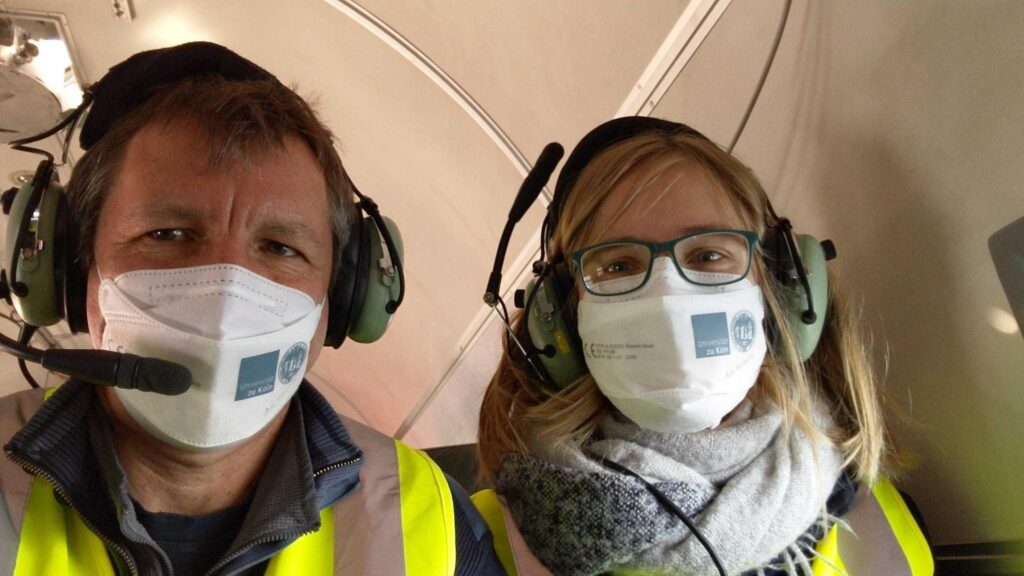Last week we installed the radar MiRAC and radiometer HATPRO on the Polar 5. The whole installation took us three days, but the following time lapse video gives you an overall impression in only two minutes!
MiRAC is a frequency-modulated continuous wave (FMCW) radar, an active remote sensing instrument, operating at 94 GHz with an additional microwave radiometer, which is a passive remote sensing instrument, recording at 89 GHz. The radar is hanging below the aircraft and is protected by a belly bod. The bottom of the pod has a hole so that the antennas of the instrument are able to transmit and receive microwave radiation. The transmitted signal is reflected by cloud droplets or the surface and received by the antennas again. These signals help us to detect clouds and to interpret their microphysical properties.
The radiometer HATPRO is installed inside the aircraft and is looking through a hole in the ground of the aircraft. HATPRO measures microwave radiation emitted by the surface and atmosphere below Polar 5. These observations contain information on the atmospheric humidity, precipitation, liquid water in clouds, as well as on the surface.

After the installation, it was time for a ground test, during which all instruments inside the P5 were connected to the aircraft electricity one after the other. Unfortunately, this did not work out as planned and after some minutes no electricity was available in the aircraft anymore. Nevertheless, the engineers repaired everything and the ground test could be completed successfully the very next day!
Before taking off to the Arctic, the instruments had to be tested during the flight as well. Thus, the first short flight took place over the North Sea and Helgoland. Luckily, all instruments on board worked properly!

After the success in Bremen, we had to quickly pack our luggages. At the beginning of the week the great journey to the Arctic started. After a stop in Oslo and Tromsø, we arrived in Longyearbyen on Tuesday! Since then we are waiting for the Polar 5 and 6 and use the time to explore the area and plan the first research flights. We expect the aircraft to land in a few hours and will give an update on the arrival soon!

To stay up to date, check Twitter for the latest information! #HALOAC3 #AC3TR #MiRACradar #polar5 #Svalbard
#AC3 #funding #ArcticAmplification (AC)3 AISAM Arctic Atacama Atmospheric boundary layer AWI Bremenhaven AWIPEV AWIPEW CFMIP-GASS climate cloud radar cloud radars COST gender gap GEWEX HALO HALO-(AC)³ HAMAG HATPRO ITCZ JOYRAD94 Kölnische Rundschau Maria S. Merian MiRAC-A model intercomparison Moisture Conveyor Belt Ny-Ålesund outreach Polar 5 Polar 6 PolarStern Precipitation PROBE COST Action radiosondes STEM STEMM Svalbard tropical convection videodocumentary Water Vapor Wetoo Winter school women in science
